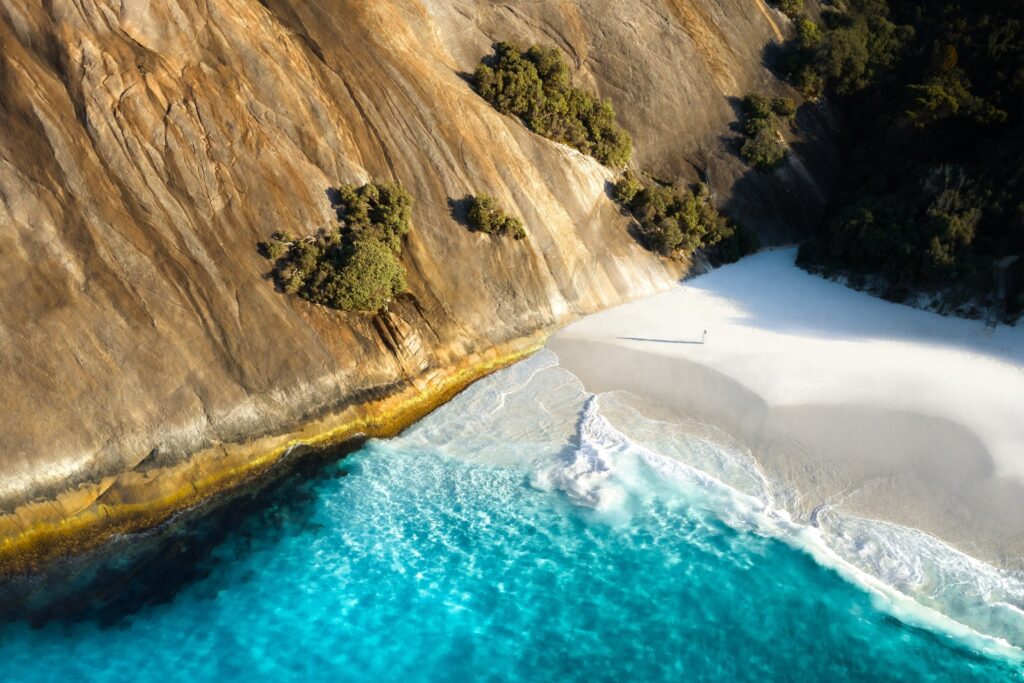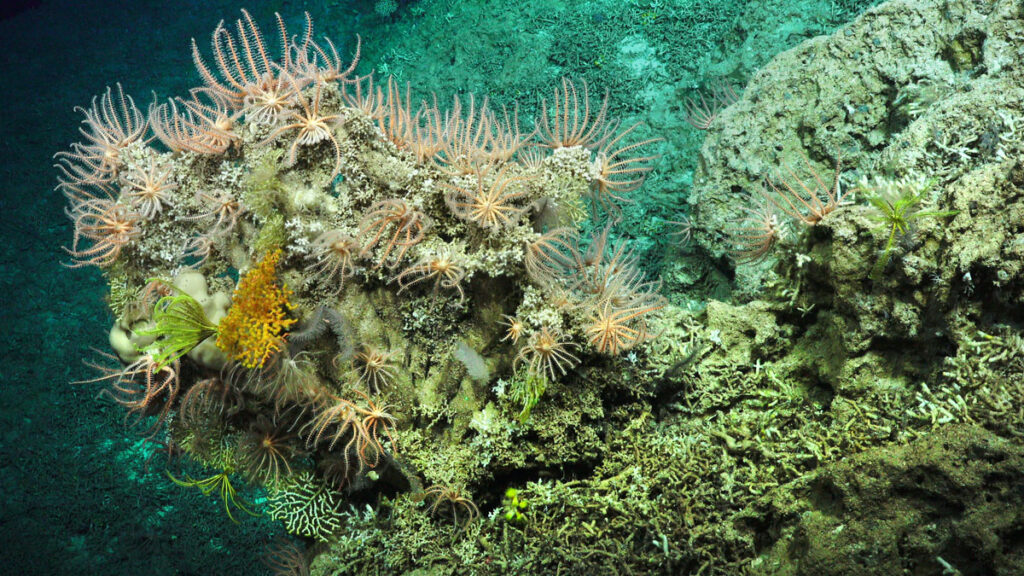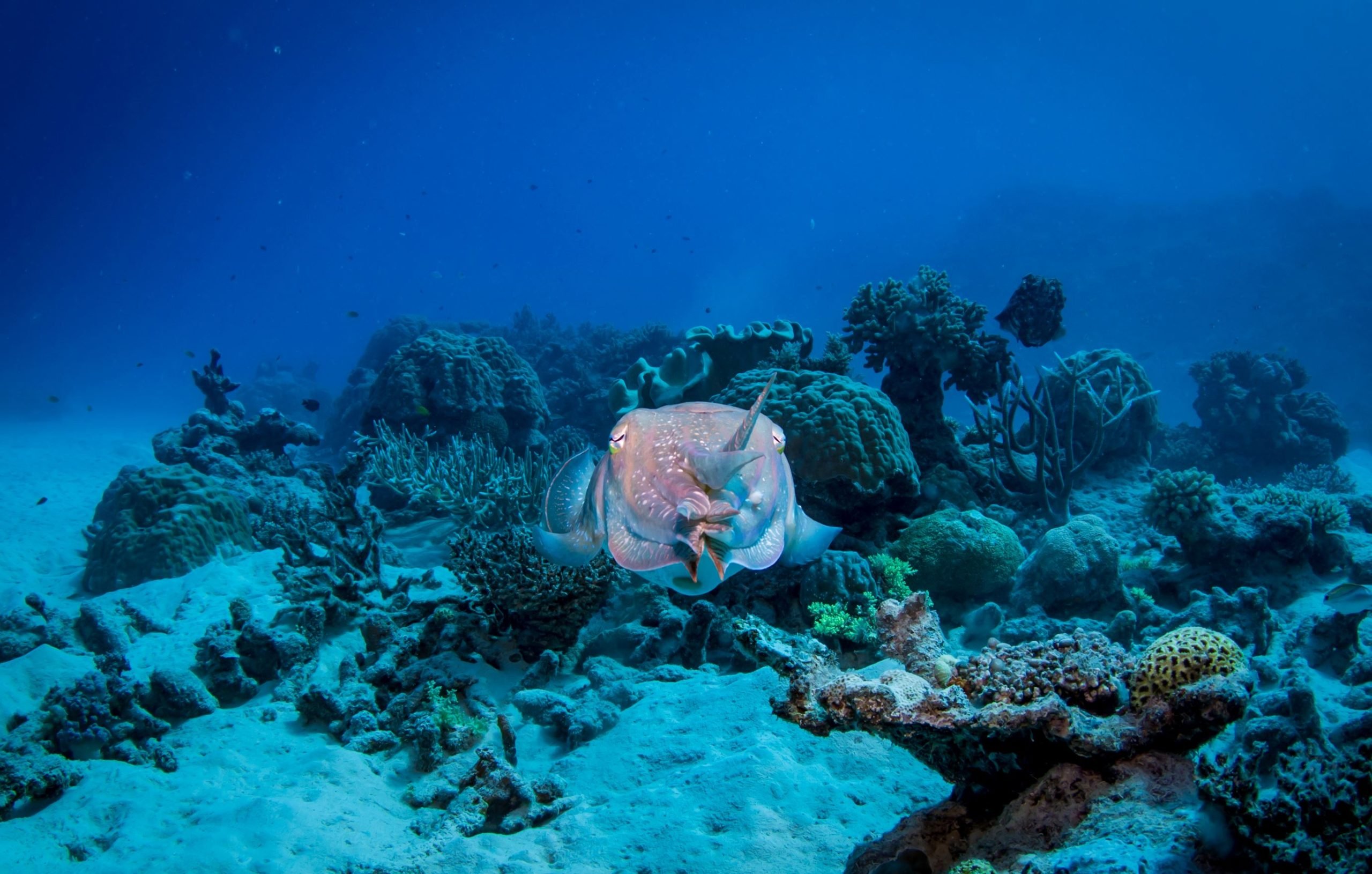The Coral Sea, an awe-inspiring expanse of the Pacific Ocean off the coast of Queensland, Australia, is a captivating underwater paradise that has fascinated divers, marine biologists, and nature enthusiasts for generations. This stunning marine environment, rich in biodiversity and vivid coral formations, offers an immersive experience into the wonders of the underwater world. From vibrant coral reefs to unique marine life, the Coral Sea is a treasure trove waiting to be discovered. Let’s dive into what makes this region a marvel of the natural world.

The Geography and Beauty of the Coral Sea
The Coral Sea is located off the northeastern coast of Australia, encompassing a massive area of over one million square kilometers. It is a part of the Pacific Ocean, bordered by the Great Barrier Reef to the west and the islands of Vanuatu and New Caledonia to the east. The Coral Sea’s shallow waters and extensive reef systems make it one of the most biologically diverse marine habitats on Earth.
Characterized by crystal-clear turquoise waters, the Coral Sea is home to an intricate network of coral reefs, sandy cays, and tiny islands. Its remote and untouched nature creates an ethereal atmosphere, drawing adventurers and underwater explorers from around the world. The coral formations, vibrant fish, and abundant sea life transform this area into a marine wonderland, making it a must-visit destination for divers and snorkelers.
The Great Barrier Reef: A UNESCO World Heritage Site
No discussion of the Coral Sea is complete without mentioning the Great Barrier Reef, one of the planet’s most famous natural landmarks and the world’s largest coral reef system. Spanning over 2,300 kilometers, the reef is a UNESCO World Heritage Site and a marvel of nature. It is made up of nearly 3,000 individual reefs and over 900 islands, providing an extensive habitat for thousands of marine species.
The Great Barrier Reef is a living, breathing ecosystem that supports a diverse range of life, including colorful coral polyps, fish, mollusks, and sea turtles. This reef system not only provides food and shelter for marine life but also plays a crucial role in protecting the coastline from storms and erosion. Visitors to the Coral Sea often take the opportunity to explore this wonder, diving into its vibrant underwater world and witnessing the breathtaking beauty of its coral gardens.
Marine Biodiversity: A Haven for Sea Life
The Coral Sea is renowned for its rich biodiversity, making it a global hotspot for marine life. It is home to an astonishing variety of species, from tiny plankton to massive whales. The coral reefs of the Coral Sea provide a sanctuary for over 1,500 species of fish, including the iconic clownfish, butterflyfish, and parrotfish. Sharks, rays, and turtles are also commonly spotted in these waters, along with an array of other fascinating creatures.
One of the most captivating residents of the Coral Sea is the manta ray. These majestic creatures, with their broad wingspans and graceful movements, are often seen gliding through the clear waters, feeding on plankton. Similarly, the waters of the Coral Sea serve as a migratory route for humpback whales, who journey here to give birth and nurture their calves during the winter months.
The coral reefs themselves are the backbone of this ecosystem. They support a delicate balance of marine life by providing habitats, feeding grounds, and breeding spaces for various species. Soft corals, hard corals, and other invertebrates contribute to the reef’s vibrant color palette and structural complexity, creating an underwater landscape that is both visually stunning and ecologically essential.
Exploring the Coral Sea: Diving and Snorkeling Adventures
For adventure seekers and marine enthusiasts, the Coral Sea offers some of the best diving and snorkeling experiences in the world. The clear visibility, warm waters, and diverse marine life make it an ideal location for underwater exploration. Scuba divers flock to sites like Osprey Reef, Holmes Reef, and Bougainville Reef, where they can witness spectacular coral formations, caves, and walls teeming with life.
Osprey Reef, in particular, is a popular diving destination due to its dramatic drop-offs and walls covered with soft corals and sponges. It is also a prime spot for encountering large pelagic species such as sharks and manta rays. Divers can explore its depths and come face-to-face with grey reef sharks, hammerheads, and even the occasional tiger shark.
For those who prefer to stay closer to the surface, snorkeling in the Coral Sea is just as thrilling. The shallow reef systems allow snorkelers to glide above colorful coral gardens filled with tropical fish, sea turtles, and other fascinating marine creatures. The Ribbon Reefs, located along the northern stretch of the Great Barrier Reef, are particularly famous for their snorkeling opportunities. These narrow, ribbon-like formations provide a sheltered environment for an array of marine life, making it a paradise for both novice and experienced snorkelers.

Protecting the Coral Sea: Conservation Efforts and Challenges
While the Coral Sea remains one of the most pristine marine environments in the world, it faces several environmental challenges. Climate change, ocean acidification, and human activities such as overfishing and pollution pose significant threats to its delicate ecosystems. Rising sea temperatures have led to coral bleaching events, where stressed corals lose their vibrant colors and become more susceptible to disease. These events highlight the urgent need for conservation and sustainable practices.
Australia has taken proactive steps to protect the Coral Sea, including the establishment of marine parks and protected areas. The Coral Sea Marine Park, for example, covers over 990,000 square kilometers and aims to safeguard the region’s biodiversity while allowing for sustainable use. Efforts are also being made to reduce carbon emissions, regulate fishing practices, and manage tourism activities to minimize the impact on the reef systems.
Marine conservation organizations and researchers are continuously working to monitor and restore damaged reefs. Programs aimed at coral restoration, such as coral gardening and artificial reef building, have shown promise in revitalizing affected areas. The involvement of local communities, tourists, and international partners is also crucial in ensuring the long-term preservation of the Coral Sea’s unique marine environment.
The Future of the Coral Sea: Sustainable Tourism and Education
Tourism plays a significant role in the Coral Sea’s economy, and it is essential that it is managed sustainably to protect this precious resource. Eco-tourism initiatives and responsible diving practices are being promoted to minimize human impact on the reefs. Tour operators are encouraged to educate visitors about the importance of reef conservation and how they can contribute to preserving the marine environment.
Visitors are also urged to follow guidelines, such as avoiding touching corals, not disturbing marine life, and using reef-safe sunscreen. By practicing responsible tourism, divers and snorkelers can enjoy the beauty of the Coral Sea while playing a role in its protection.
In addition to sustainable tourism, education is key to the future of the Coral Sea. Raising awareness about the threats facing coral reefs and the importance of marine conservation can inspire individuals and communities to take action. Schools, organizations, and governments are working together to educate people about the value of protecting marine ecosystems and promoting environmental stewardship.

